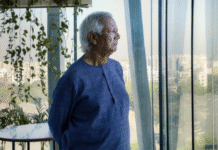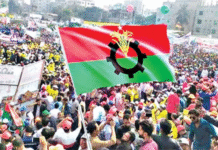The Bangladesh-China-India-Myanmar (BCIM) car rally that was flagged off at Kolkata on Friday has entered Bangladesh and is heading for Dhaka, amidst security worries.
The organisers say they are worried about the security situation in Bangladesh following the violence on Friday.
“We hope this does not affect the rally. We have twenty vehicles with about 80 participants. I hope they dont run into road blocks or attacks because we have seen media reports about attacks on vehicles,” said an official of the Confederation of Indian Industry (CII) that organised the rally with strong support from India’s Ministry of External Affairs (MEA).

But he said the Bangladesh government, through its deputy high commission in Kolkata, has communicated that it will take strong security measures for ensuring safe passage of the rally. Bangladesh diplomats in Kolkata said adequate security escorts with hooter vehicles will accompany the rally as it passes through the Jessore-Dhaka-Sylhet route on way to India’s northeast.
West Bengal Chief Minister Mamata Banerjee on Friday flagged off the BCIM Car Rally at Kolkata’s Salt Lake Stadium on Friday amid much bonhomie and fanfare with speakers expressing a keen desire to strengthen partnerships between Bangladesh, China, India and Myanmar (BCIM). Bangladesh’s deputy high commissioner Abida Islam, Chinese consul-general Zhang Lizhong and Myanmar consul-general U Kyaw Swe Tint were present at the ceremony with West Bengal transport minister Madan Mitra, CII president Adi Godrej and other CII and MEa officials as well as senior business executives.
From Kolkata, the BCIM Car Rally will traverse more than 3,000 km through mountainous terrains dense, jungles, vast, fertile plains to deep valleys, wild streams to expansive rivers, as it passes through Jessore, Dhaka, Sylhet, Silchar (Assam), Imphal(Manipur), Ka Lay, Mandalay, Ruili, Tengchong, Erhai Lake, Dali, before culminating in Kunming in China, on Mar 5.
The BCIM Car Rally symbolizes an attempt to retrace the lost trails of historical Southern Silk Trade Route connecting India and China via Bangladesh and Myanmar and discover new opportunities in the region for common economic prosperity through enduring partnership for a bright future.
At the car rally, Mamata Banerjee said the rally participants were ‘ambassadors of regional bonding’ and wished them a safe journey in their travel through myriad landscapes.
Adi Godrej observed that the rally seeks to retrace a legendary economic and trade route which has long been a strong bond between the peoples of this region.
“By revitalizing these ancient paths, the Rally would underscore the cultural and civilizational commonalities beside unveiling new horizons for economic and commercial cooperation on this 3000 kilometer route,” Godrej said.
He stressed on several measures that could unleash the economic potentials of the region – fast tracking of BCIM process at the political level, regular summit level dialogues to come up with a road map and road shows by industries along the trade corridor.
Chandrajit Banerjee of the CII revealed that with a combined population of about 2.8 billion, the BCIM countries forms a formidable bloc of at $11 trillion economy.
The West Bengal CM flagged off altogether 20 cars – 10 from the Tata Motors stable and 10 made by Hawtai of China – amid cheers and waving from thousands of people.
The idea of holding the Rally across one of the arteries of the Southern Silk Route is based on our realisation that to ensure inclusive growth development, this region must be integrated for the uplift of millions of people living in it.
The idea of organising the BCIM Car Rally took shape with a resolution at the 2006 Delhi meeting of the BCIM Forum, and the suggestion was soon affirmed at the government-to-government level in the Joint Communique’ exchanged between the former Chinese President Hu Jintao and Indian Prime Minister Manmohan Singh later in the year.
R K Agrawal, Chairman, CII, Eastern Region, said, “The idea of the BCIM Forum is the result of an initiative of a number of institutions in the four involved countries which came together to set up a platform to foster, promote and deepen regional and sub-regional cooperation among the participating countries.”
Source: bdnews24









